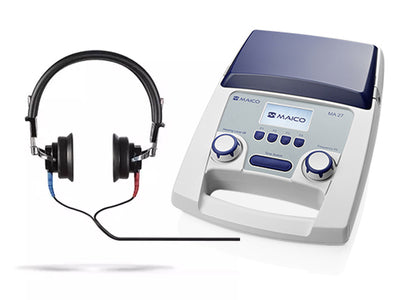Mediworld Subscription
Subscribe to Mediworld for product discounts, healthcare news, event updates and more!
Bestsellers
The Mediworld product range is extensive, so we have the most popular items for you below.

Load More
Nothing matches the criteria
Mediworld has been a regular supplier to the NHS for a number of decades.
We specialise in turnkey projects and are proudly UN approved.
2023 is our 50 year anniversary, and we are here to service you for many more.

The perfect way to screen your ears. Our range of audiometric testing equipment is aimed at school, primary care and GP surgeries use.

We offer Amplivox 116 and Amplivox 240 screening audiometers. These are devices which are lightweight, portable, simple in operation, a very high quality, strong and reliable.
To use an audiometer, you need to decide what method of audiometry will be used. The most common type is pure tone audiometry and it’s done with a pair of headphones.
The sounds go through the outer and middle layers of your ear to evaluate your auditory sensitivity.
After deciding that, the person is positioned in a place they can not see the front of the audiometer. Then the headphones are laid on the table, facing the patient.
The audiometer is set to 2000 Hz and maximum volume, and in most cases, the patient practices raising their hands when a tone is heard. A visual inspection of the ears is done and then the decibel dial is set to 40dB and the frequency dial to 1000 Hz.
The red headphone is placed on the patient’s right ear and the blue headphone on the left ear for the best results.
Audiometry is simply testing a person’s ability to hear different sound frequencies. The frequency is based on the intensity (loudness) and speed of the sound wave also called tone.
It is done using an audiometer and must be handled by a trained technician called an audiologist.
An audiometer is an instrument that carries out the test of sound, it’s a process done to determine a person's hearing ability.
An audiometer is employed to test when a person begins to notice hearing problems and it can help to detect hearing loss at an early stage.
Audiometers and Tympanometers are used to test different things. While an audiometer tests how well you hear sounds, a tympanometer tests how well the middle layer of your ear works by measuring the movement in your eardrum.
Generally speaking, audiometric testing is recommended for anyone exposed to noise levels greater than 85 dBA. But based on different locations, there are different rules guiding how frequently you should get a test done.
In the UK, audiometric tests in the workspace should be done once exposure to sound exceeds the action level. This must be done to prevent hearing problems and take necessary precautions.
According to the American Speech-Language-Hearing Association’s (ASHA) guideline, healthy people from age 18-40 who are not having any noticeable hearing loss should have their hearing tested every 3-5 years.
In the Canadian guidelines audiometric testing involves having an initial hearing test, a hearing test at least once every 12 months after the initial test, and then a hearing test more frequently should the noise level exceed 105 dBA.
Mediworld Subscription
Subscribe to Mediworld for product discounts, healthcare news, event updates and more!
Would you like to save product on your wishlist?
Subscription completed successfully. The letter has been sent by mail.
User already subscribed










